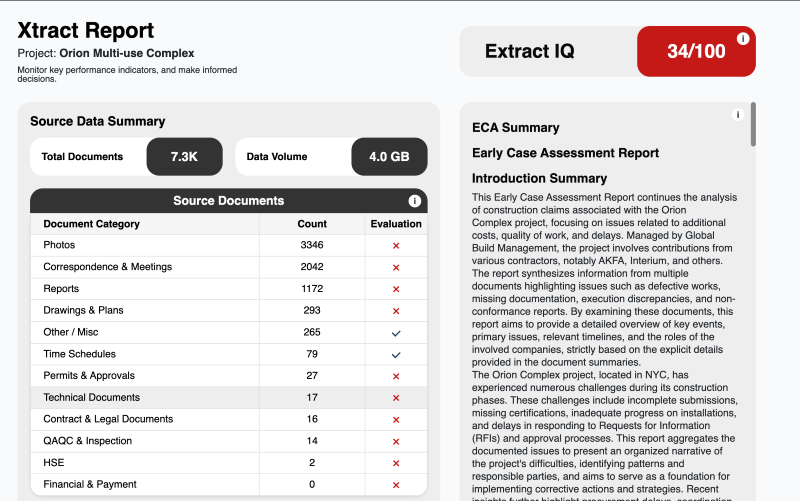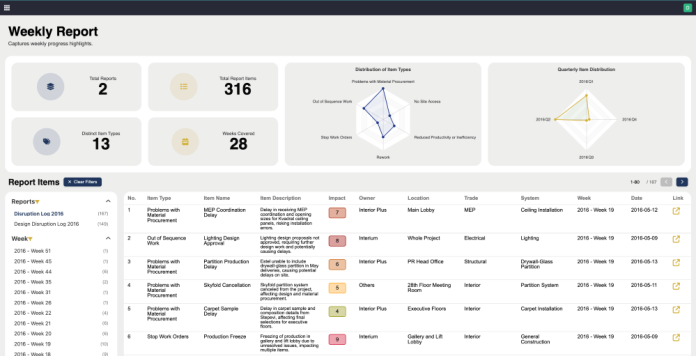An interview with Vladimir Milovanovic, CEO and co-founder of Lupa Technology, a groundbreaking data intelligence platform that is revolutionising data discovery, management and AI-powered reporting in the construction and legal sectors.
Emerging AI technologies are significantly reshaping how parties draft, administer and review international construction contracts. We spoke to Vladimir Milovanovic, CEO and co-founder of Lupa Technology and asked him for his thoughts on how AI is changing the way people work in the construction and infrastructure sector and how the industry can adapt for greater efficiency.
After two decades working on more than 150 FIDIC contracts worldwide, he is applying that experience to an AI-driven data intelligence platform built to empower contract users make faster, better-evidenced decisions.
What impact is the rise of AI and its increasing use having on construction contracts?
A tremendous one. It’s changing the way things are being done, as AI is affecting every stage of the contract lifecycle from drafting and tendering through to administration, claims and dispute resolution in various ways. Over the last 10–20 years we’ve seen an explosion in the volume of project data, and AI was initially seen as a tool that could help us deal with those large volumes. At the same time, it’s also producing more data, and that data has become even cheaper and easier to generate, it’s almost an exponential rise.
First of all, it is not uncommon now to see a contract documentation running to 20,000 pages. Because generating data is much easier, AI is definitely impacting how we draft contracts. The second area where we see a huge impact is in the analysis of contracts. In public infrastructure projects, for example, contractors now rely heavily on AI to review tender documents and contracts, and to enhance their negotiation strategies.

But what’s the impact of AI in practice? What we see on the ground is that AI not only makes the analysis faster, it’s often more accurate than what people are used to doing manually. Then there’s administration. Once we’re in the contract, there are many tools that help people be more proactive and better informed about key aspects of the project. They get actionable insights that tie back to the contract, so they know exactly how to translate an event happening on site, even on a distant site, into a particular notice that may need to be issued or a letter of communication or a question.
Obviously, they’re using AI to draft notices and nowadays, an average contract manager will have access to information that will really make them stand out. Those people who are using AI are, for the moment, tilting the table in their favour and we expect this will be the case over the next few years. When everybody adopts it, the table will go back to its normal position.
How do we best balance AI outputs with human judgment?
For us at Lupa Technology, balancing AI outputs with human judgement is extremely important because people by nature want to check things and make sure that what’s coming out of the system is correct. They don’t trust AI blindly, especially not the type of people who deal with contracts. That’s a particular mindset. We recognised early on the importance of maintaining a human in the loop.
What does that mean? It means that we have to offer validation points to the humans so they can check the output that the AI has prepared, which is very similar to checking the workings of your employees. If somebody else prepared an assessment, an expert, a contract manager or somebody responsible for a client relationship, you to have a check and balance system to make sure that they don’t make a mistake.
Validation is an important point. That means we need to give people immediate access to the source of the data. We also need to show them, for example, when AI outputs things in Lupa, there is a distinction between what’s expressly stated in the documents and what was inferred or reasoned out by the AI, which is where some of the hallucinations can be classified. So that’s another validation point.
There are always audit trails. We can answer the question: how did we arrive to this point? Having a full history and understanding who did what in the process is extremely important. An auditable trail of decisions and events made by a human versus the ones generated by AI is essential.
When you look at the human and the loop, they actually interact. In the prompt engineering, a human puts in their knowledge, experience and expectations, that is where the human in the loop is present at the first moment. It’ then that the AI combines that human input with the data to synthesise whatever needs to be synthesised.

How is Lupa Technology advancing data-driven decision-making in industries such as construction and infrastructure?
In different ways, but we’ve centred on decision-making. Lupa enables you to have all the information from different sources in one place, searchable, so document retrieval is extremely important. If you’re looking for a particular document, that can be difficult without a solution like Lupa. On one recent dispute, for example, a team used Lupa to assemble the full history of a disputed variation; what would previously have taken several weeks of manual review took just a few days, and the parties were able to agree the facts much more quickly.
We enable these storylines and chronological sequencing of events to be clearly displayed to the user. Once you know the storyline on a particular topic, and the chronology of it, that gives you a deeper level of understanding.
Lupa also enables automated reports and alerts on certain events that should be brought to somebody’s attention. It helps people be better prepared for claims. I always say that the best way to avoid claims and disputes is to be ready for them and, ultimately, that leads to a significant risk reduction.
It also helps people deal with insurances and subrogation-type of events, because those are also deeply rooted in data. Ultimately, it’s the documents that are telling us the story. That’s basically our philosophy behind it; we just use AI to help us do those things.
How is the use of AI helping to evolve the roles of project participants? How is it changing how people work and what they do on projects?
I think we’re experiencing a massive change globally. Some jobs and roles, or at least some of the tasks within them, are becoming redundant and are pretty much being replaced by AI. It’s a reality that we’ve seen. For many others, it means changing their focus. They will spend less time doing some of the more mundane type of work that AI can handle on its own and in turn focus more on doing high-value work.
We are also seeing new roles. There has been an increase in construction companies hiring information managers who are better equipped to deal with data. Data itself has become more important since the advent of AI. People are much smarter about how they organise their documents; they’re more thoughtful about how they share data, how they organise it and how they classify it, so they have a better set of data management skills.
Everybody’s learning that now, very quickly. That’s at an individual level, but on a company-wide view, we see this whole notion of data as an asset coming through much more than it used to, because it’s now easier to evaluate and prove the value of that data. It’s just happening faster, so people are much more conscious of it.
Why do you think that FIDIC contracts have enjoyed such enduring support in the industry globally?
My answer is a bit biased because I was introduced to the FIDIC contracts suite very early in my career, around 20 years ago, and I have since written, administered and been advising on claims and disputes under FIDIC contracts on probably over 150 different contracts. I’ve experienced other contracts, but somehow FIDIC was always the baseline for me.
I just think that FIDIC contracts are very well thought out, given all the years that have gone into developing them and the input, direction and engagement from contractors and developers. It also brings in the engineer’s role, which is not something that you find in any other contracts. All of this helps with better administration. I think FIDIC did a marvellous job with how they set things up. From our perspective at Lupa, that clear structure is also why FIDIC projects lend themselves so well to data-driven tools, it’s much easier to organise project information around a contract that already has well-defined roles and mechanisms. Also, everybody wants some kind of a baseline. Everybody wants some set of rules because it makes it easier to live in this world, and FIDIC offers a set of rules that people trust and really believe in.
From Lupa’s perspective, that clarity and structure are actually a big advantage. The more clearly a contract defines roles, mechanisms and processes, the easier it is to organise project data around it and to build AI tools that support contract users without changing the fundamental rules of the game. In that sense, FIDIC’s legacy and Lupa AI’s potential are very complementary.
Click here to find out more about Lupa Technology and how they can help your organisation.


















